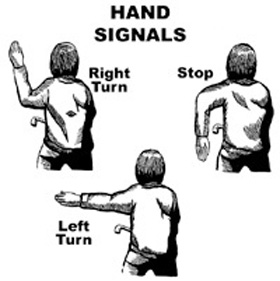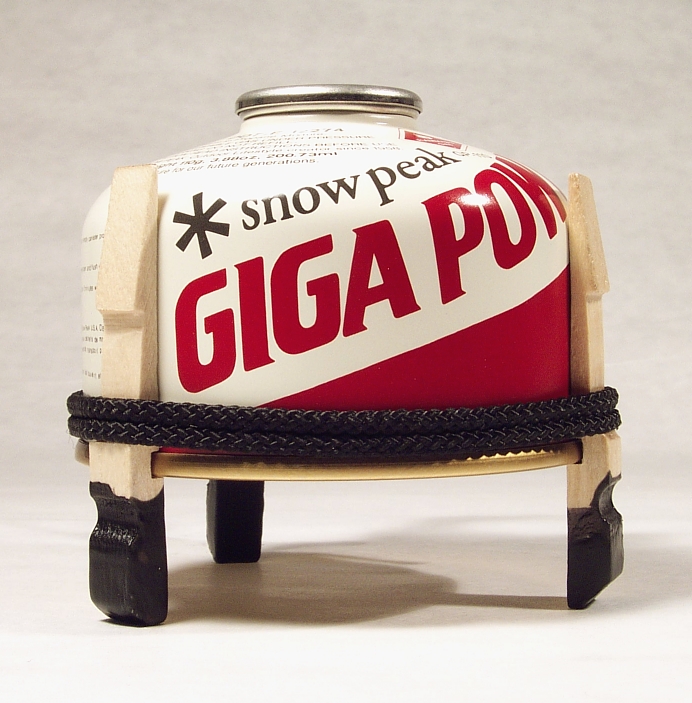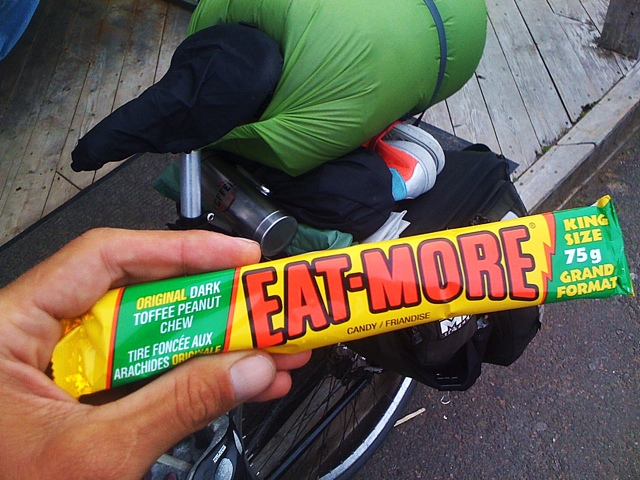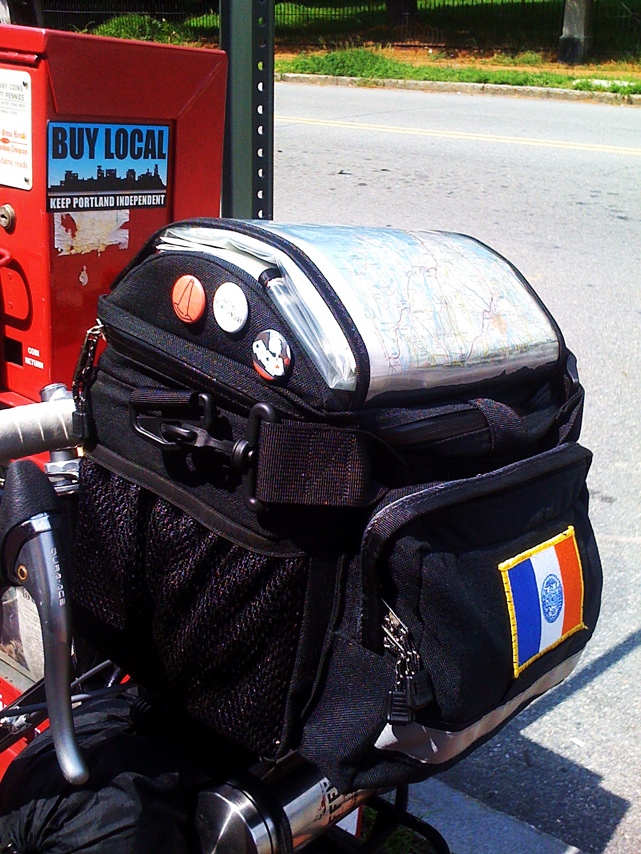Good bicycle touring idea on how to Stabilize Your Canister Stove
Tag Archives: Advice
Advice on Touring Bikes
I think just about any bike could be used for bicycle touring. If lots of parts and bits are that important and need to be specific, then you can do what you need to get all those parts and bits. Some of the ones that may or may not be obviously important to a person new to touring are the frame, the wheels, the drive train, and the contact points.
There are millions of bikes out there. It is not crucial that you buy a Surly Long Haul Trucker or any other complete off the shelf touring bike, new or used. But one does need to start somewhere.
A steel frame that is about the right size for your body is the best place to start. New or used, a “touring” bike or just a bike that is a bike, anything in good condition will do. Having a frame made of steel is going to be best because Aluminum is too difficult to repair, Ti is too expensive, and carbon is too expensive and pretty much can not be repaired. If it’s not a pure racing bike there is probably a way to get a rack on it. If it only has 2 bottle mounts that’s fine. Mine does have 3 but i carry peanut butter in the 3rd. And if there were no 3rd cage mount i’d carry that peanut butter in a pannier. Besides that, pipe clamps will do the trick to add bottle cages where there are no mounts.
Wheels. For basic touring, generally people want a bike with either 700C wheels or 26″. Keeping it simple, and speaking about average size riders, 700C will be more efficient and good if more than 90% of your riding is on paved roads. And 26″ will be stronger and better for riding on unpaved conditions. 26″ is also OK for paved roads but will be heavier and a bit slower. This is all important because the frame is made for either 700C or 26″. So this is a choice to make when looking for a bicycle or a bike frame.
My first tour was with an off the shelf touring bike. I wanted to ride across the county so I bought a touring bike. It had the stock, 700C factory built 36 spoke, with a 3-cross lacing pattern. I had not too much stuff but was fully loaded and about 650 miles later my rear wheel broke a bunch of spokes and i could not ride. I was in the middle of nowhere and had to deal with a lot of unexpected to get back to riding.
With that, I do not recommend touring on factory built wheels. Regardless of the wheel size or how many spokes, my best advice is hand built wheels from someone who is reputable and a 4-cross lacing pattern.
It is not only important that the wheels spin true, but also that the tension in the spokes is even. A spoke that is too tight is doing more work than the ones next to it. And a spoke that does too much work will break. And then the ones next to it will be doing too much work. It’s like falling dominos in slow motion. Ask someone you know who has broken a spoke, if they kept riding I’ll bet they broke more than one. So having hand built wheels is a good place to start because the builder should watch the tension to keep it even. And as for the 4-cross, it means the stress of the wheel is sent to a broader area on the hub. Think of it like this, carry a heavy backpack with skinny straps, or carry it with wide straps.
I like to ride on roads, i don’t want to have to work any harder than i need to, and i don’t want problems with my wheels. A lot of touring advice out there says 36 spokes are more than enough. I will agree that a wheel might do fine with just 36 spokes but I know that a wheel with 48 spokes will definitely do much better, and with only a small weight penalty. I said something about spoke tension. A strong wheel with 36 spokes has more tension than a wheel with 48 spokes. With 48 each spoke does less work(because there are more of them working) so the tension does not need to be as high. Or think about it like this, tandem bikes have a lot of weight on them right? Two riders on one bike with just two wheels. How many spokes do tandem wheels have? I don’t want to carry 150 lbs. of gear, but i could. And if i did my 48 spoke hand built 4-cross wheels would be just fine.
Drive train. This is simple. Have a wide range of gears, a new chain (maybe not the cheapest one there is) and if it all works good before you depart, it should work to get you a couple thousand miles before anything major needs replaced. Although if you have to lay you bike on the ground I’d say lay it with the chain side up so your derailleurs dont have the weight of your bike on them.
Contact points meaning saddle, handle bars/grips, and pedals. Unless you have a Brooks saddle already, you should get a Brooks. I know it sucks to look all over the web looking for advice on gear and seeing nothing but LHT, Ortlieb, Brooks, LHT, Ortlieb, Brooks, LHT, Ortlieb, Brooks. They all get a lopsided amount of gushing reviews, mostly by the less experienced. I don’t give a shit about LHT or Ortlieb, but getting a Brooks is a good idea. And preferably one with springs. I’ve done 4 tours, each 2, 3 or 4000 miles and only on my most recent one did i ride with a Brooks. It can be done without one. But after I got one I don’t want to do a long ride on anything else. As for handle bars i think wider is more comfortable with good cork bar tape. And pedals, think about clipping in. It’ll let more of your muscles do work. Or,,, it means a few of you muscles wont have to do all the work.
Ok, any steel frame that fits, strong well built wheels, a sound drive train, learn about Brooks now or later, comfortable handle bars, and efficient pedals. After all that you can think about what stuff to take(clothes, tools, camp set, cook set, notebook, camera) and what to carry it in. Good luck.
I was thinking just that
Buy Local
Simplify cleaning after cooking
One thing that is bad about bringing cooking gear is the clean up after eating. But the other night I made pasta, very simple I boiled water and cooked whole wheat thin noodles, used the pots lid to strain the water out. I added sauce from the jar to the noodle in the pot, added some salt and pepper. Good to go. Ate it right out of the pot I cooked it in. I don’t have a plate. (or a strainer)
But when I’m done I have pasta sauce all over the inside of the pot.
Here is the tip. A slice of bread. Wipe up the left over sauce with bread and the clean up after the meal is a snap. Just a fraction of the water is needed to clean up.
Same goes for the vege burgers I cook. The greasy mess in the skillet. With the corners of cheese that gets stuck on there too. And the grease on the spatula (great to have for pancakes). Wipe the spatula on the bun, or bagel, then use the top of the bagel to mop up the mess in the skillet before setting it on the burger to eat. The pan is nearly clean and I haven’t even taken my first bite yet.
Outdated Hand Signals

I think that riding through many new towns and cities a cyclist is bound to not have a good understanding of drivers attitudes. Signaling helps. The reason I’m thinking of this subject is because I was riding in Brooklyn and some guy rode by me and did what’s in this image showing “right turn”. My thought was – no driver is going to understand what that means. These signals were made for drivers way back before cars had turn signals. And all these signals use the left arm because a driver could not safely stick their right arm out the window. To use this Right Turn signal while riding a bicycle is silly.
As a bike rider we can use either arm to make a turn signal.
Left turn = left arm extended
Right turn = right arm extended
Keep it simple.


